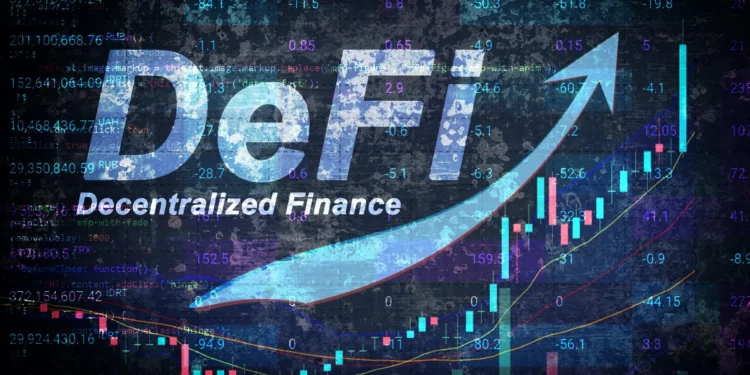Pursing a college education is an excellent choice regardless of the view of some people in recent times. A college degree has become increasingly essential as it is required when applying for a professional job. Education is important but it is not cheap given that its cost has increased astronomically over the years.
Some people are now looking at Crypto as a potential solution to settle acquired student loans. There are so many reasons and ways people have used crypto to repay their student loans. One of the ways is to lower interest rates that they can get for crypto supportive loans.
While the interest rate for student loans can easily reach 12.99% for adjustable-rate loans and 14.5% for fixed rates, you can easily get an interest rate of 4.5% with a loaner like blockFi. These DeFi crypto loans have more variable repayment periods, better interest rates and can be borrowed against your crypto holdings if you use Bitcoins or Ethereum as an insurance for the loan.
Are you a student holding crypto-assets? Looking for ways to clear your student loan? In this article, we will take you through what DeFi loans are and how you can clear your student debt through them.
What Is a DeFi Loan?
DeFi (decentralized finance) has witnessed huge increase in use since 2020. It is the newest innovative phase of the lending and borrowing market. Through DeFi lending protocols, users get to choose the money market they want to lend to and earn interest from, depending on the market’s yield.
DeFi encompasses a blockchain-based ecosystem that offers a spectrum of financial services comparable to traditional institutions. Deployed as smart contracts, decentralized finance applications automate and execute financial transactions, diverging from the reliance on centralized third parties in traditional finance.
DeFi loans are regarded as one of the rapidly-evolving parts of the cryptocurrency ecosystem. They enable individuals to swiftly and effortlessly take out a loan without ever having to reveal who they are to a third party.
In the context of DeFi lending, a DeFi loan enables users to borrow or lend money in a decentralized and seamless manner while maintaining complete control over their funds. Users can leverage their crypto assets as collateral, ensuring that the collateral value exceeds or matches the loan amount. Smart contracts oversee this process, ensuring a DeFi loan remains over-collateralized as per the DeFi lending protocol’s specified percentage.
For example, MakerDAO’s DeFi lending protocol mandates a minimum collateralization ratio of 150%, meaning that to borrow 100 Dai, one must collateralize the loan with at least $150 worth of ETH.
Most DeFi lending protocols incentivize borrowers by rewarding them with governance tokens, fostering liquidity and engaging users in the ecosystem. These loans are beneficial for investors as they enable lending of crypto assets to borrowers, with smart contracts automatically distributing digital assets, facilitating peer-to-peer borrowing and interest accrual in lending pools.
How do DeFi loans work?
When your crypto assets remain idle in a wallet, they don’t accumulate interest. While the underlying value might fluctuate, there’s no passive earning associated with holding that specific cryptocurrency. This is where the concept of DeFi loans comes into play.
Picture the possibility of lending your crypto to someone else and earning interest on that loan. It mirrors the traditional banking system, but DeFi opens this service to a broader audience. In the realm of DeFi, anyone can take on the role of a lender.
By offering your crypto assets for loans, you can yield interest on those assets. Various methods facilitate this, with lending pools being a primary mechanism. Think of these lending pools as the modern equivalents of loan offices in traditional banks.
Why Are DeFi Loans an Option to Pay off Student Loan Debt?
Paying off student loans with a DeFi loan involves leveraging your crypto assets as collateral to borrow funds, which can then be used to settle your debt
DeFi lending provides an avenue to borrow against crypto holdings, offering a means to settle student loan debt without selling crypto assets and incurring capital gains tax. By investing stablecoins in lending pools, users can earn interest, converting it to fiat currency when needed.
DeFi loans offer open and permissionless access, eliminating traditional lenders’ requirements and allowing borrowers to settle debt with just a crypto wallet and invested tokens. The decentralized nature provides self-custody over assets, and the swift distribution of loans contrasts with the bureaucracy of traditional financial institutions.
How Can You Pay Off Your Student Loans with a DeFi Loan?
Consider a scenario where you aim to settle a $12,000 student loan with a $20,000 ETH holding. Instead of selling crypto assets and diminishing your market position, you can deposit ETH as collateral in a DeFi lending protocol. Borrowing $12,000 in stablecoins against this collateral allows you to convert them into fiat currency, avoiding price volatility. Repayment flexibility and the ability to monitor collateral value prevent liquidation risks.
Despite the advantages, there are Risks of Paying off College Debt with a Crypto Loan:
- Variable Rates: DeFi lending protocols offer variable rates, subject to fluctuations based on crypto asset supply and demand, potentially resulting in higher costs.
- Liquidation: Protocols may automatically liquidate collateral if it falls below specified thresholds, imposing penalties and risking debt repayment.
- Smart Contract Vulnerabilities: Errors in smart contract codes may compromise the security of deposited funds, posing a risk to users’ crypto assets.
- Smart Contract Upgrades: DeFi protocols are subject to updates and improvements. While upgrades are intended to enhance security, they may introduce new risks. Users need to stay informed about protocol changes and their potential impact on their loans.
- Lack of Insurance: Unlike traditional financial institutions, many DeFi platforms do not offer insurance on deposited funds. In the event of a security breach, hacking incident, or unexpected events, users may face challenges in recovering their losses.
Key Takeaway
Within the cryptocurrency ecosystem, crypto lending emerges as a groundbreaking financial instrument. While it provides distinctive advantages such as low interest rates and rapid fund accessibility, it concurrently introduces substantial risks attributable to market volatility and regulatory ambiguities.
As the crypto lending landscape undergoes further development, a comprehensive grasp of these nuances becomes indispensable for individuals’ considering participation in this ever-evolving market.










